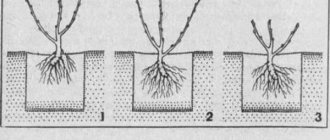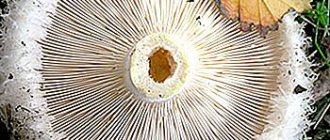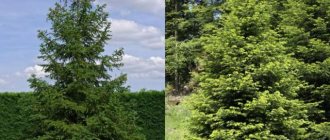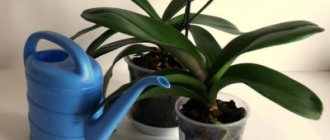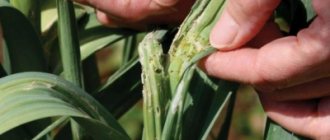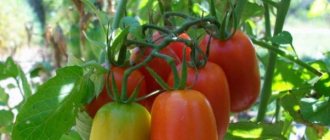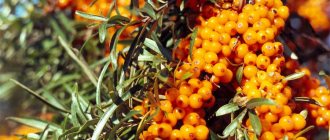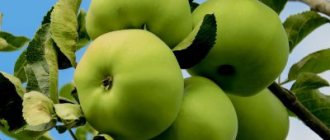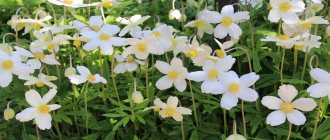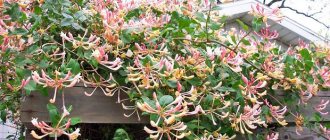Description of plants and differences
Amaryllis and hippeastrum are relatives, belonging to the same botanical family, but representing different genera.
Amaryllis (lat. Amaryllis)
The plant is South African, native to the Cape Province of the Republic of South Africa, which is known for supplying the world with quite a lot of beautifully flowering endemics (plants that are not found in nature anywhere other than a certain place).
Until 1998, the Amaryllis genus consisted of a single species - Amaryllis belladonna (lat. Amaryllis belladonna), and later several more varieties appeared: Amaryllis bagnoldii, Amaryllis condemaita, Amaryllis paradisicola.
The amaryllis bulb is huge - 5–10 centimeters in diameter. The amaryllis peduncle is leafless, the leaves are green, 30–50 centimeters long and 2–3 centimeters wide, arranged in 2 rows. Leaves form in autumn or early spring in cool climates and die off before the end of spring.
The bulb produces one or two bare flower stalks at the end of summer. The height of the peduncles reaches 60 centimeters. Each peduncle bears an inflorescence, which consists of 2–12 funnel-shaped flowers. Amaryllis flowers range from snow-white to pink, and are found in purple and red. The size of the flowers is 6–10 centimeters in diameter and consists of 6 petals.
Hippeastrum (lat. Hippeastrum)
Belongs to the Amaryllidaceae family. There are about 90 species of hippeastrum. The name of the flower consists of two roots of the ancient Greek language, meaning “horseman” and “star”.
Hippeastrum is often confused with amaryllis, but you should know that amaryllis beautiful (a unique representative of the genus) grows naturally in southern Africa, and hippeastrum grows in the subtropics and tropics of America, in particular in the Amazon basin.
Hippeastrum was brought to Europe in the 16th century, and in 1799 the first plant hybrid, Johnson's hippeastrum, appeared.
Plant differences
Amaryllis and hippeastrum - these two plants are often confused because they are very similar to each other in appearance. Their flowering stage is different, which distinguishes them. Amaryllis blooms in the fall - the flowers are well fragrant, and hippeastrum blooms in winter or spring - the flowers are odorless.
Another indicator that distinguishes these 2 plants is the number of flowers on a peduncle: hippeastrum has up to six flowers, and amaryllis has from six to twelve flowers on one peduncle.
These two beautiful flowers can also be distinguished by the configuration of the bulb. Amaryllis bulbs are pear-shaped and quite large. Hippeastrum bulbs are more convex and slightly flattened, but it is quite difficult to distinguish one bulb from another. In order not to make a mistake when choosing bulbs, it is better to buy them in designated stores in the manufacturer’s original packaging. The bulbs of these plants can last quite a long time in a dry room.
Amaryllis is represented by the only variant Amaryllis belladonna, which is extremely rare; those plants that are sold under the name “amaryllis” are essentially hippeastrum.
Hybrid hippeastrums are exceptionally beautiful, their flowers come in a variety of colors: orange, snow-white, pink, red, and are also found with stripes of a different color along the edges or along the petals.
Useful conclusions
If you do not want to professionally grow indoor plants and sell them to order, sell them at the market or in a store, by and large it is not so important what the difference between amaryllis and hippeastrum is (the photo of the plants indicates their external similarity).
They are both from the same family, but belong to different genera. Much more important for an amateur gardener is the attractiveness of the color palette of flowers and their number in plants, as well as the cost of the latter.
Maybe some should consider the flowering times of their green friends. At the same time, awareness of the differences between plants and their names is not superfluous.
It will help eliminate mistakes when purchasing bulbs. After all, not only amateur flower growers, but also flower shop sellers often confuse these plants.
It should also be noted that most of the indoor flowers of the amaryllis family are hippeastrums. But amaryllis is quite a rare occurrence among houseplants.
Follow the recommendations for caring for amaryllis flowers, planting and photos, take into account the peculiarities of growing hippeastrum, and you will be able to get luxuriously flowering indoor plants.
Planting amaryllis and hippeastrum
Hippeastrum is especially common in floriculture, but first we need to talk about that very real “natural” amaryllis, which many value and love more than the bright varieties of hippeastrum for its tenderness, aristocracy, and aroma.
Planting and propagation of amaryllis
Amaryllis bulbs are inspected before planting. A healthy plant has a molded bulb with scales without traces of rot or mold. If spots and signs of decay are found, the affected parts are cut off and the fresh area is treated with charcoal. Before planting, the bulbs are kept in potassium permanganate.
Planting amaryllis:
- Bulbs are planted in March.
- A drainage ball is placed at the bottom of a spacious hole.
- The bulbs are deepened by 15 centimeters, completely covered with soil.
- If group planting is carried out, keep a distance of 25 centimeters between the bulbs.
- After planting, the plant is not watered, and only when the sprouts have grown 10 centimeters, ample watering is provided.
- Immediately mulch with sawdust to prevent the top layer of soil from drying out, which has a detrimental effect on the bulb.
Important! In regions with a hot climate, amaryllis are planted before winter, in October-November, without further transfer to a pot for the winter.
Reproduction
Vegetative propagation is the most popular, since it preserves varietal properties and flowering begins from 3–4 years of existence. The following methods are usually used:
- Children's department . When picking, small onions with developed roots are separated from the mother bulb. Planting is done in separate pots with soil for mature plants. During the year, pruning of leaves is not performed so that the baby accumulates nutrients.
- Dividing the bulb . A strong adult bulb is dug up before dormancy begins, the leaves are cut off from the upper lobe and vertical cuts are made, creating 4–8 divisions. Each one should have part of its bottom and outer scales intact. The cut areas are treated with crushed wood ash. First, the dried bulbs are planted in wet sand. It is moistened from time to time, but very carefully. The cuttings take root in about a month, after which the first sprout can be detected. Plants with 2 leaves are prepared for transplanting into good soil.
Planting and propagation of hippeastrum
Hippeastrum implies the possibility of planting using a variety of methods, among which both seeds and parts of the plant can be used at home. You can experience each of them.
Seed method
Planting hippeastrum in a pot by seed means the full maturation of the box formed after flowering.
It is very important that during this period the plant takes in enough nutrients, water and sunlight, since otherwise the seeds may not ripen.
When the box with them is completely dry, it is simply torn off, then the seeds can be immediately used for sowing. Please note that when sowing hippeastrums, in the first year of sowing, the bulb in the ground is just beginning to form, which means that only the next year it will be able to produce an arrow with leaves. It may take another 1–2 years before true flowering occurs.
And yet, despite the need for a long wait for flowering, it is thanks to the seed method that it is possible to obtain varietal hippeastrums with a clear manifestation of all the characteristics.
Vegetative methods
Vegetative methods of propagation of hippeastrums involve either the use of daughter bulbs, which are formed near the main one (they can be separated only after the diameter reaches at least 2 centimeters), or by dividing the bulbs into a pair of lobes.
Both of these options are used only when picking a flower, when the bulb is dug out of the ground.
When planting hippeastrums through daughter bulbs, flowering also does not begin in the first year. They need 2–3 years to mature and gain vitality for flowering.
Landing technology
When planting a bulb in previously prepared soil, it is important to consider the following features:
- in a flower pot there must certainly be a drainage hole and a layer of drainage made of expanded clay or stones, which will not allow moisture to be retained;
- when planting, the bulb is not completely buried in the soil - its upper part should be above the surface;
- During the period of plant growth, it is necessary to renew the soil 1–2 times a year, since hippeastrums suck out nutrients quite intensively, and they require picking no more than once every three years.
Crossbreeding ability
Hippeastrum flower - care at home and in the open ground
Amaryllis crosses well with other species, for example, with Crinum, Nerine or Brunsvigia. Hippeastrum, in turn, is practically incapable of crossing; in 90% of cases this is impossible.
Amaryllis in the wild
Despite this, the varietal diversity is very large and numbers almost 2000 varieties, about 200 of them are the most popular. The most common are representatives of the Leopold hybrid group.
Caring for hippeastrum and amaryllis
Caring for hippeastrum and amaryllis flowers does not require much effort.
Hippeastrum
A brief summary of care instructions for comfortable plant growth:
- Lighting . Clear diffused light. Shade from direct sunlight. After flowering, full sunlight is required for the formation and maturation of the bulbs.
- Watering hippeastrum . Rich during flowering - the ground should be moist all the time. During dormancy, store dry.
- Quiet time . The stem is cut only when it is completely dry. Gradually reduce watering, and then stop watering altogether. The rest period should last 6–8 weeks from February. After this, the bulb can be removed from the pot, the “babies” are disconnected and the original plant is replanted.
- Hippeastrum fertilizer . Once every one to two weeks with liquid fertilizer for flowering house plants, diluted in the concentration recommended by the manufacturer. Feeding begins as soon as the buds open and ends when the leaves begin to fade.
- Hippeastrum transplantation . Approximately once every 3–4 years, during dormancy. The soil consists of 2 shares of clay-turf, 1 share of leaf soil, 1 share of humus, 1 share of peat and 1 share of sand.
Amaryllis
After planting, the plant is placed in a bright place; it is worth providing the flower with weakened sunlight.
Watering is dosed and constant. It is advisable to keep irrigation water at room temperature.
Fertilizer - Amaryllis can be called greedy flowers; the plant is very responsive to the delivery of fertilizers. During the summer season, the bulb accumulates nutrients for flowering next year, so specialized fertilizers for bulbous crops can be applied once every ten days. Closer to autumn, it is beneficial to feed the flowers with phosphorus and potassium fertilizers.
Preparation for wintering - in winter, the bulbs go into a dormant state, therefore they need to be provided with proper conditions.
Around the beginning of September, watering of flowers is gradually reduced. Plants can be hidden from light to stop their growth. In October, pots with plants are placed in a dark place; the leaves die off over time. Pots with plants are kept in a dark, cool room without watering until January, after which the bulbs are transplanted into a new substrate and placed in a bright place.
Pests and diseases
Examine the flower carefully! If you find small red spots or stripes on the bulb, peduncle or leaves, then the plant is affected by this disease - a red burn. The disease is difficult to cure; quite often the plant becomes deformed and dies.
- What can be done? When watering, do not allow water to penetrate the bulb. Keep the plants in well-lit, cool places, try to ventilate the room sufficiently. Before planting the bulbs for forcing, for reliable prevention, soak them for an hour in heated water (water temperature 45°C). Do not use pesticides under any circumstances.
Bulbs are quite often affected by parasites. One of them is the Soft false scale, which most often settles under the peel at the base of the bulb. These small parasites suck the juice from the plant, which stunts the growth of the flower and the buds do not open. The false scale insect also settles on many other indoor plants and causes great harm to citrus plants.
- What can be done? Before planting the bulb, for protective purposes, treat the bulb with hot water (as described above). If parasites do appear, carefully treat the scales of the bulb and the base of the peduncle with karbofos;
The bulb can be spoiled by narcissus fly larvae (the size of the larvae is up to 15 millimeters). They are dangerous because once they get into the bulb, they gnaw out the bowels of the bulb, after which the bulb rots.
- What can be done? Treat the bulb with hot water for reliable prevention. If the damage is not severe, scrape out the rotten scales along with the larvae, and sprinkle the cut areas with crushed charcoal. Do not use chemicals;
Thrips love to feed on the leaves of hippeastrum. They suck the juice out of the leaves, leaving behind silvery milky specks. These parasites can also be detected by shiny black dots on the leaves (these are thrips feces).
- What can be done? Spray the plant with actellik or karbofos.
Flowering periods
These two related plants have fundamental differences in the periods of dormancy and flowering. Amaryllis always has a time when it goes to sleep, because the plant is a deciduous flower; hippeastrum can also be evergreen, depending on the variety.
Amaryllis blooms once every 365 days, usually in the autumn, while hippeastrum will delight with lush flowers two to four times a year, most often the flowering period occurs in winter or spring. In addition, the beginning of flowering may vary from the beginning of forcing.
What is the difference between petals and inflorescences
When amaryllis blooms, it produces 6 identical petals that curl into a spiral. At the same time, the color scheme is not rich in shades from soft pink tones to bright purple.
Gardeners can observe petals of different shapes, which depend on the type of plant. Flowering is accompanied by a variety of colors.
Amaryllis species
Amaryllis is grown only in peaceful conditions.
In Amaryllis, the entire genre is represented by only one species - Amaryllis Belladonna. However, using the method of selection, it was possible to develop another very beautiful variety - Amaryllis Sarniensis. Both of these species are very beautiful and are often grown indoors.
Amaryllis Sarniensis growing in a peaceful environment is not that difficult if you follow one important but simple rule. First, let the onions germinate in a greenhouse until the stem begins to grow, and then plant the plant again in a solid container. While the leaves are just beginning to grow, the plant is already beginning to produce its first buds. For this, many people love this plant.
Amaryllis belladonna is considered the most popular to grow indoors. The flower grows high (up to 0.5 m), but at the same time produces many pink or white buds. Surprisingly, this variety blooms in autumn and winter, and in the summer it drops its leaves and overwinters.
Thus, the main types of hippeastrum and amaryllis are considered. And, despite the external similarity, you should still know the main differences between these plants. There are differences both in appearance and in basic scientific characteristics. Let's look at all this in more detail.
So amaryllis flowers are quite dense. At the same time, the plant can bloom from 6 to 12 buds at the same time. But in hippeastrum the flower is empty in the middle, but this does not make it any less beautiful. But in a bouquet 2-6 buds bloom at the same time. Blooming, very large flowers open to view.
Another characteristic feature is that hippeastrum flowers are always larger. They usually reach 14-15 cm in diameter. But amaryllis inflorescences are small compared to the hippeastrum inflorescences. Their diameter is only 8 cm, provided that the necessary care functions are provided.
Amaryllis flowers have no scent, but hippeastrum inflorescences always emit a very pleasant subtle aroma. In addition, hippeastrum, unlike amaryllis, always first produces thick, juicy green leaves, and only then begins to bloom. First, the amaryllis produces buds, and only then leaves appear around them.
But the main feature is that amaryllis is the only one of its kind, while currently there are only 2 species of such a plant. And there are more than 90 varieties of Hippeastrum, with even more different species.
Rules of care
If we take into account that hippeastrum and amaryllis are almost identical, the conditions for their maintenance may also be the same.
In the Hippeastrum bulb, the scales are thin and have no scales.
This is mainly due to the same type from which these plants come. Let's consider the main features of caring for such plants in the indoor environment.
When growing such flowers, it is necessary to observe a sequence of temperature fluctuations. As soon as the bulb begins to sprout, it is necessary to place the plant in a sufficiently lit place and provide an ambient temperature of about 21-22 ° C. But during flowering, it is best to move the pot to a cooler place, lowering the air temperature to 18 ° C. This will help extend the time flowering.
As soon as the plant blooms, you will immediately have to move it to the same warm place, just avoid direct sunlight. Let it grow until the leaves begin to wilt. As soon as the last leaf has disappeared, it is necessary to transfer the flower to a cool, darkened room in which the ambient temperature is maintained at 14 ° C. Leave for 6 weeks. During this rest period, the flower will have time to gain new strength and then continue flowering.
The water that plants need is very careful. But a lot depends on the specific species. The fact is that there are very moisture-loving varieties that require constant watering. As a rule, the soil in pots with such plants dries out quite quickly.
However, most hippeastrum and amaryllis require the same watering system. It is best to first water the bubble with a small amount of clean, soft water in a saucepan. As soon as it begins to bloom, you need to slightly increase the frequency of watering and the amount of water. But don't make the potting soil too wet. Maintain moderate humidity so that the flask does not begin to hurt or rot.
Therefore, it is necessary to maintain moderate watering until the fall, until the plant begins to prepare for the rest period. Once the last flowers have faded and the leaves begin to disappear, gradually reduce the amount of water poured into the pan.
During the rest period, it is better not to water the soil at all. All you have to do is break it lightly enough to get enough oxygen to the roots. But it is not necessary for the soil in the pot to dry out a lot. After all, the light bulb may develop poorly or stop growing altogether.
Along with proper watering, the plant must be provided with nutrients. Feeding should begin from the moment the bulb begins to bloom. He should start watering the plant with liquid mineral fertilizers once every two weeks. During the flowering period, you need to switch to a special complex fertilizer for flowering potted plants.
But feeding should be stopped immediately after flowering. During the development period, the plant must have time to collect nutrients in the required quantities. You should also know that during flowering, instead of complex fertilizers, you can change organic and mineral preparations for indoor flowers.
To prevent damage to the plant, it is useful to treat the shoots and leaves from time to time with special preventive medicines against white aphids, rust fungi and thrips. Indeed, in most cases, these diseases affect such plant varieties.
Thus, the main features of the growth of hippeastrum and amaryllis are considered. It is easy to understand that such tuberous plants require absolutely the same care. And if you give them the right conditions, you can enjoy the most beautiful inflorescences every year and produce little babies from the bulbs. Some breeders deliberately breed amaryllis to create new hybrids that will be suitable for growing at home.
If you have both flowers in front of you, it is easy to distinguish amaryllis from hippeastrum. It's harder to confuse them. You can make the mistake of buying a bulb or plant without flowers. If you don't know the difference between these colors, we recommend using the following tips. MAIN DIFFERENCES: - hippeastrum bulbs are round, sometimes elongated, and amaryllis bulbs are pear-shaped; — amaryllis has a pleasant subtle aroma; — amaryllis inflorescence has 6-12 flowers, hippeastrum has up to six flowers in an inflorescence; - if your plant bloomed in autumn - then amaryllis, if in winter or spring - it is hippeastrum; - Look at the stem: if it is empty, your plant is a hippeastrum. Both plants - amaryllis and hippeastrum - belong to the Amarilli family. The botanical name Amaryllis has been attributed to Amaryllis Belladonna, all other similar flowers are called hippeastrum. Difference between hippeastrum and amaryllis: - Number of species in nature: hippeastrum. Includes up to 85 different species. Amaryllis. The only type is Amaryllis Belladonna or Amaryllis beautiful. — Where does the plant come from: Hippeastrum. Native to the American tropics and subtropics. Amaryllis. It comes from southern Africa. — Possibility of crossing: hippeastrum. In 90% of cases it cannot be crossed with other representatives of the species. Amaryllis. Crosses well with species such as: Crinum, Nerina, Brunswig. — Hippeastrum rest period. Most hippeastrums have a resting period, but there are also evergreen species. For example, Hippeastrum Papilio. Amaryllis. Deciduous. You are resting. — When it blooms: Hippeastrum. It blooms once a year, in autumn, spring, winter - depending on the beginning of forcing. Some species bloom twice a year. Amaryllis. It blooms once a year, usually flowers appear in late summer and autumn. Amaryllis after flowering. — Stem characteristics: Hippeastrum. The peduncle is cylindrical, up to 90 cm tall, hollow, green in color, and has a brown or gray tint. There are up to 15 flowers on a peduncle with a subtle aroma. Amaryllis. The tail has no indentation and is green with a purple tint. It grows to a height of 1 m and has up to 12 fragrant flowers. — Flower color: hippeastrum. Red, pink, green, yellow, white. They may be veins and dots of a lighter shade. Amaryllis. Different shades of pink. — Leaf shape and color: hippeastrum. The leaves of different species are different: smooth or hard, elongated, resembling a belt. Amaryllis. The leaves are narrow, smooth, grooved. — Flask shape: Hippeastrum. The lamp as a whole has a round, sometimes slightly elongated shape. The scales on the onion are similar to the onion, only white. Amaryllis. Pear-shaped onion. Covered with gray scales, hairy on the inside.
The amaryllis family, which includes amaryllis and hippeastrum, belongs to the class of flowering plants. These flowers have gained immense popularity as decorative flowers.
They can often be found as bedding or in the home.
Color Definition:
Help!
The amaryllis flower usually begins to bloom in late summer or early fall, while its leaves die during flowering.
Genus and origin of flowers
Both flowering crops belong to the same amaryllis family, but have different genus. Hippeastrum is famous for its rich varietal diversity; it has about 90 species. But amaryllis only has one.
As for the origin, the birthplace of amaryllis is Africa; it was on this continent that the flower was first discovered, and then transported to European countries.
Hippeastrum was created artificially; the bulbs of its ancient representatives were brought from the subtropical zone of the earth.
Pests and diseases
Gray rot most often affects amaryllis. The main cause of the disease is stagnation of water in a pot or tray. To eliminate the problem, reduce watering and treat the plant with antifungal drugs.
The most common pests affecting amaryllis are thrips or aphids. A sign of infection is yellow, curled leaves. Pests usually attack the flower due to improper care and insufficient air humidity.
The main diseases of hippeastrum:
- Red burn of bulbs (staganosporosis) - red stains and spots appear on the bulbs.
- Anthracnose - the appearance of black spots.
- Fusarium.
If the bulb is not completely affected by the disease, the diseased areas are removed from it and the plant is treated with fungicidal preparations. As preventive measures it is necessary:
- Select the correct soil composition.
- Do not overfeed with nitrogen fertilizers.
- Provide adequate lighting.
- Normalize watering.
With proper care, the risk of flower contamination is minimal. The most common pests of hippeastrum include scale insects, spider mites, onion mites, and mealybugs.
Pests are usually visible to the naked eye. They are removed from the plant with a sponge or cotton pad soaked in alcohol. After this they are treated with special preparations. To protect against onion mite attacks, the plant should not be planted next to other onion species.
Comparison
The only species of amaryllis was brought to Europe from South Africa. Hippeastrums were brought to the Old World from South and Central America. Particularly many species of these plants were once found in the Amazon basin.
Amaryllis is a bulbous plant. Each of its bulbs is quite large. It reaches 5-10 cm in diameter. At the end of summer, one, rarely two, flower stalks emerge from it. They have no leaves, which gives the whole plant a somewhat unusual, unearthly appearance. The shoot length ranges from 30 to 60 cm. This parameter depends on the quality of the soil, its moisture content and the altitude of the area above sea level.
An inflorescence forms on the amaryllis peduncle. It can form from 2 to 12 flowers. Each flower has six neat petals that form a funnel. The color of the flower can vary from pale pink to a deep purple hue.
Amaryllis also has leaves, or rather had them. Green leaf blades form in the coolest time of the year - late autumn or spring. With the onset of the summer heat and stabilization of high temperatures in the air, amaryllis leaves die off. In our latitudes, amaryllis blooms in the fall.
Hippeastrums are bulbous plants. The bulb has a conical shape with a characteristic neck. Its diameter ranges from 5 to 10 cm. The roots of the plant are numerous and poorly differentiated. With age, they die off, and the root ring moves up the stem. This plant has leaves. At the same time, there is an alternation of three leaves with a closed base and one open leaf, which is the axil for the inflorescence. Four formed leaves and one peduncle stem correspond to one flower life cycle. Moreover, in one growing season, with appropriate care, the plant can please its owners with two or three life cycles with flowering. In our latitudes, these plants bloom from late winter to mid-spring.
The stem-peduncle of hippeastrum can be from 35 to 80 cm. It is hollow. An inflorescence is placed on it, which includes from two to six flowers. The shape of one flower resembles a funnel. The number of boat-shaped, slightly corrugated petals is six. Considering that the number of varieties of hippeastrum bred by man has already exceeded 2000, the color and character of the color can be very diverse and unexpected.
Hippeastrums are prestigious and popular plants among florists and amateur gardeners. In addition to interspecific crosses within the Hippeastrum genus itself, their hybrids with Amaryllis belladonna, orchid and long-tubular flowers are very popular.
Main types of hippeastrum
After reaching a height of 10 cm, the Hippeastrum sprouts should be transplanted into a solid container.
Hippeastrum represents about 90 species. But at the same time, only a few are grown in peaceful conditions. However, even some breeders are trying to learn how to grow wild hippeastrums.
The most common is the Hippeastrum Palace. In nature, this flower grows mainly in Paraguay and Brazil. This is a typical epiphyte whose roots really enjoy a constant flow of fresh air. Therefore, it grows like a vine, entwining the crown of trees and other large plants with a high trunk. The flowers of this plant are very similar to lily flowers. They are distinguished by a bright red color and appear along with the leaves.
Argentine hipeastrum is very rare among florists. And in the wild it grows only in Argentina, and then in small quantities. It has high momentum and at the top you can see a beautiful bouquet of three snow-white, lightly pressed flowers. Since this plant loves subtropical climates, it can only be found on high hills.
A very interesting option is narrow-leaved hippeastrum. This plant can be found in the wild in southern Brazil. This is a very large plant with large leaves and flowers.
This narrow-leaved hippeastrum blooms very beautifully: huge red buds open into 9 pieces at a time, creating an elegant bouquet. The plant loves moisture, so it is mainly found in swamps. Potted varieties of this type are very receptive to moist soil and air.
Artificially grown varieties of hippeastrum are still very popular among gardeners. The Rosalie variety is considered very beautiful. The plant features elegant, delicate pink flowers that bloom every spring in the painting. The Evergreen class is considered one of the most elegant. The plant produces very beautiful buds. The flowers are white-green, the petals are narrow, slightly pointed at the ends and curled. This plant can produce up to 14 buds at a time if it provides good conditions.
Hybrid Hyppeastrum varieties Marilyn Monroe are not considered very fashionable for growing indoors. But at the same time, the plant is distinguished by delicate white flowers, the petals of which are rounded. Usually you get the same number of buds, but the bouquet always looks very elegant and neat.
